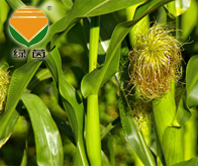
Wheat:
Wheat nutrition scheme
Wheat growth habit:
Wheat is an annual gramineae plant, and now the seeds used are generally dormant.
The growth period of wheat can be divided into seedling stage, tiller stage, growth stage, heading stage, filling stage and mature stage.
Winter wheat, usually sown in October, is harvested from May to June in the second spring after the low temperature vernalization stage in winter. Spring wheat is mainly planted in Gansu, Ningxia, northern Shanxi, Inner Mongolia and other places.
Characteristics of fertilizer requirement in wheat:
For each 100kg grain formed in wheat, nitrogen 2.5~3kg, phosphorus(P205)1~1.7kg, potassium(K20)1.5~3kg, nitrogen, phosphorus and potassium ratio are 1:0.44:0.93. Due to the different climate, soil, cultivation measures, variety characteristics and other conditions, the yield of wheat is also different, so the total absorption of nitrogen, phosphorus and potassium and the amount of nutrients needed for each 100kg grain are also different.
The absorption of nitrogen, phosphorus and potassium by wheat at different growth stages is basically similar. There are two peaks of nitrogen absorption: one is from emergence to jointing stage, the amount of nitrogen absorbed accounts for about 40% of the total absorption, the other is from jointing to booting and flowering stage, the amount of nitrogen absorbed accounts for 30% ~ 40% of the total.
Recommended scheme:
Lvyin organic nitrogen fertilizer, as nitrogen fertilizer, exists in the form of organic nitrogen. the nutrient mechanism of the crops is different from that of the inorganic nitrogen fertilizer, Under the action of soil microorganisms, slow release organic nitrogen gradually decomposes and mineralization into inorganic substances absorbed by crops, and can provide ideal nutrition and energy for soil microorganisms. Enhancing the activity of the microorganism, increasing the number of the microorganisms, promoting the humification of the organic matter, and continuously and stably releasing the nitrogen nutrition to the soil.
Base fertilizer: It is used as a base fertilizer,can be sowed with seeds together.
Usage: 150-600 kg / ha (adjusted according to different crops).
Topdressing: application of urea 225 kg / ha in combination with irrigation from the rising stage to the jointing stage of wheat.
Zinc sulfate or manganese sulfate can be applied 15-30kg / ha in zinc or manganese deficiency areas. Boron deficiency areas can be based on 7.5 kg /ha borax as appropriate.
Rice:
Rice growth habits
Rice is a cereal crop of the genus Rice, which is represented by rice (scientific name: Oryza sativa L.). Rice, native to China and India, was planted by ancestors in China's Yangtze River basin seven thousand years ago.
Rice is divided into indica and japonica rice according to the type of rice, early and late rice, glutinous and non-glutinous rice. There are other categories, according to whether soilless cultivation is divided into paddy field rice and floating rice; according to the life cycle divided into seasonal rice and "lazy rice" (over-the-year ratooning rice); according to height and short divided into ordinary rice and about 2 meters of giant rice; according to salt and alkalinity divided into ordinary light rice and "sea rice" (in fact, it mainly uses fresh water). The seed of rice is rice, which is called brown rice after removing glumes, and rice can be obtained by grinding rice furfuri layer. Nearly half of the world's population eats rice as its staple food. In addition to edible rice, rice can also be brewed, sugar can be used as industrial raw materials, rice husks and rice stalks can be used as livestock feed. The main rice producing areas in China are Northeast China, Yangtze River Basin and Pearl River Basin. Rice is a direct cash crop, and rice is the staple food of northeast China and southern China.
Characteristics of Fertilizer requirement in Rice
Rice is a kind of fertilizer crop, which can not meet the needs of rice growth and development only by relying on the supply of ten soils. the application of corresponding element fertilizer must be carried out according to the characteristics of fertilizer demand at different growth and development stages of rice. In particular, a large amount of nitrogen, phosphorus, potassium elements are required. The demand for nitrogen, phosphorus and potassium fertilizer in rice is generally 1.6-2.5 kg, 0.6-1.3 kg, and the ratio of potassium 14-3.8kg nitrogen, phosphorus and potassium is 1: 0.5: 13 for every 100kg rice produced.
Rice seedlings are divided into dry seedling, water, wet, plastic film insulation, etc. Attention should also be paid to the application of organic fertilizer in rice seedling raising field. Because the organic fertilizer has all kinds of nutrients and long fertilizer efficiency, it is rich in the nutrients necessary for the growth of rice. It can improve soil structure, increase air permeability, improve the ability of soil fertilizer conservation and soil moisture conservation, and is a good soil modifier.
Recommended scheme
The nutrient composition of Lvyin slow release liquid fertilizer "helvyuan" N-60 is liquid urea-formaldehyde polymer. Mainly through the stomata of plant leaves, stored in plants slowly decompose and release nitrogen that can be absorbed by plants.At the same time, it is fully absorbed and utilized by plants. The release period can reach 60 days.
The application of leaf topdressing can be mixed with most pesticides (pesticide attention secondary dilution). For single leaf crops or crops with thick waxy layer, organosilicon and other auxiliaries can be added appropriately.
Usage: 7.5kg/ ha, (adjustable amount according to different crops)
Corn:
Corn nutrition scheme
Corn growth habit
According to the growth characteristics of corn, it can be divided into three main growth stages: seedling stage, panicle stage and flowering and grain stage. The nutritional growth period of corn is called seedling stage. From jointing to heading is the panicle stage, which is the vigorous growth of vegetative organs of corn. The formation of female and male panicle differentiation, vegetative growth and reproductive growth at the same time determine the size of corn. The male panicle is the reproductive growth stage of corn when it is mature into flowering and grain stage.
Characteristics of Fertilizer requirement in corn
The proportion of nutrients required for each growing period of corn is different. From emergence to jointing, corn absorbs 2.5% nitrogen, 1.12% available phosphorus and 3% available potassium. From jointing to flowering, the absorption of nitrogen, available phosphorus and available potassium were 51.15%, 63.81% and 97%, respectively. From flowering to maturity, the absorption of nitrogen was 46.35%, effective phosphorus was 35.07%, and the effective potassium was 0%. Corn growth needs to absorb a variety of mineral nutrients from the soil, among which nitrogen is the most, potassium is the second, and phosphorus ranks third.
Recommended scheme
The nutrient composition of Lvyin slow release liquid fertilizer "helvyuan" N-60 is liquid urea-formaldehyde polymer. Mainly through the stomata of plant leaves, stored in plants slowly decompose and release nitrogen that can be absorbed by plants.At the same time, it is fully absorbed and utilized by plants. The release period can reach 60 days.
The application of leaf topdressing can be mixed with most pesticides (pesticide attention secondary dilution). For single leaf crops or crops with thick waxy layer, organosilicon and other auxiliaries can be added appropriately.
Usage: 7.5kg/ ha, (adjustable amount according to different crops)






